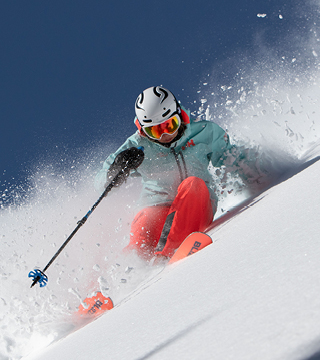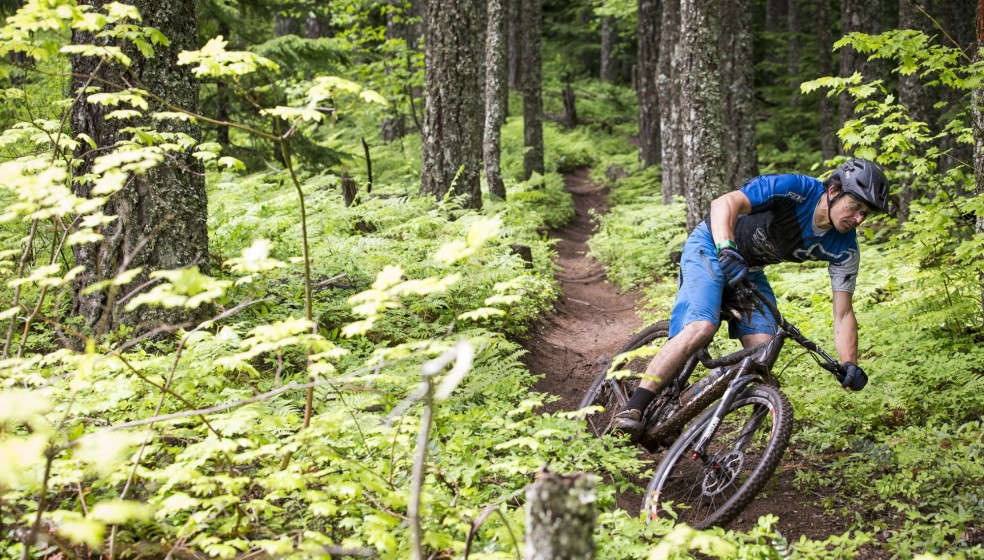Understanding bike frame geometry
So you’ve decided to buy a new bike, great! These days bikes come in a variety of shapes and sizes with more than a few subtle differences in frame geometry. At first glance these numbers may make no sense but they can be fundamental in how a bike performs. Understanding what these numbers relate to and how they make a difference can hugely affect your ride whether it’s on the road or on the trail. Tweaking a bike’s geometry can make it better suited to different disciplines of riding, making it more capable at climbing or descending or even impacting how it goes around corners. While the following is intended to give you a basic understanding regarding bike geometry, nothing is a substitute for speaking to our friendly team in store and test riding or demoing a bike for yourself!
Head angles and chainstay lengths, what do they all mean?
A – seat tube length
B – effective top tube length
C – head tube length
D – seat tube angle
E – head tube angle
F – wheelbase
G – chainstay length
A – Seat tube length
Seat tube length is a result of top tube length, bottom bracket height and seat tube angle and some bikes these days (eg Trek) still base their sizing off of this measurement (eg 15” for S,17” for M, 19” for L). Generally speaking though, seat tube length won’t matter too much unless you have particularly short legs for your body size and need additional stand over height.
B – Effective top tube length
The effective top tube length is the horizontal distance from the top tube/head tube junction to the seat tube and is often the most effective way to determine a bike’s size. This measurement has become significant as more and more bikes are designed with sloping top tubes. The effective head tube length determines roughly how far you will have to reach from the saddle to the handlebar.
C – Head tube length
Head tube length can be important if you want a really aggressive (low) handlebar position or a really relaxed (high) handle bar position. You can alter the handlebar position with more or less spacers on the steerer tube, but only within limits (the steerer tube is the part of the forks that goes through the head tube and connects to the stem and handlebars). So, for the most part a short head tube with no spacers will allow you to get lower than a longer head tube with no spacers.
D – Seat tube angle
A steeper seat tube angle moves the saddle forward while a shallower angle moves it back. Steep is fine for racers. It allows them to ride hard in an aero crouch, as the more open hip angle doesn’t constrain breathing or power transfer. It’s not so good for more relaxed riding as it transfers more of your weight from your backside to your hands, which can cause aches and pains. You can change the effective seat tube angle by sliding the saddle forward or back in the seat post clamp, or by fitting a different seat post with more or less ‘layback’ (the distance the clamp is behind the seat post centreline).
E – Head tube angle
Head tube angle is one of the more popular angles for determining how a bike will handle on the trail. For the most part, the more the front wheel of a bike is raked forward, the more stable it will be at speed or when descending. This is why Downhill (DH) and All Mountain (AM) bikes have “slack” HT angles – for stability. The less rake the fork has (ie steeper), the faster it will steer and turn, however this will be at the expense of stability at high speeds. Depending on the category of riding a bike is designed for the angle of the head tube will be within a certain range. XC bikes have a steeper head tube angle compared to AM and DH bikes. Generally, entry-level XC bikes will be a little slacker and hence more relaxed to ride than race XC bikes.
F – Wheelbase
The wheelbase is the distance from axle to axle. The longer it is, the more stable the ride will be. However, this added stability sacrifices maneuverability, especially at lower speeds. Conversely a shorter wheelbase will handle quicker and livelier and will also make a bike easier to spin. Longer wheelbases tend to be found on downhill bikes because they benefit greatly from the added stability. The Giant Glory (DH), for instance, has a 48 inch wheelbase. Recreational bikes on the other hand benefit more from the agility of a shorter wheelbase. For example, the Giant Talon which has a 43″ wheelbase.
G – Chainstay length
The length of a bike’s chainstays directly affects its wheelbase length which affects maneuverability and stability; thus shorter chainstays make for a snappier ride. Shorter chainstays also make a bike easier to manual, hop, and pop and make it easier to control in the air. This is why short chainstays are a must have for dirt jumping and street bikes. Shorter chainstays also leave less room for flex, causing immediate power delivery to the rear wheel.
Ultimately we’ve only touched on the basics of bike geometry here, there’s plenty more we could discuss including bottom bracket height, trail, reach and so forth. You’re next step is to head into a store and try one out! Have a think about what exactly you’re looking for in a new bike, where and how often you’ll be riding before you head in and speak to our knowledgeable sales staff. They’re out there every weekend and live and breathe bikes and can give you the friendly and helpful advice you need to ensure your next ride gives you years of satisfaction.
James Mulcahy
Marketing
Torpedo7



















